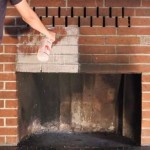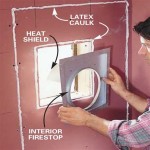Fan For Gas Fireplace Insert: Enhancing Efficiency and Comfort
Gas fireplace inserts offer a convenient and efficient alternative to traditional wood-burning fireplaces. They provide warmth, ambiance, and a focal point for a room without the mess and maintenance associated with wood. However, the effectiveness of a gas fireplace insert can be significantly enhanced by incorporating a fan system.
A fan for a gas fireplace insert is designed to distribute the heat produced by the unit more evenly throughout the room. Without a fan, much of the heat tends to rise and be concentrated near the ceiling, leaving the lower areas of the room feeling cooler. A fan actively circulates the heated air, creating a more comfortable and consistent temperature throughout the space.
The choice of a fan for a gas fireplace insert depends on several factors, including the size of the fireplace insert, the size of the room, and individual heating preferences. Understanding the benefits and features of different fan options is crucial for making an informed decision.
Key Benefit: Improved Heat Distribution
The primary function of a fan for a gas fireplace insert is to improve heat distribution. Gas fireplace inserts generate heat through the combustion of natural gas or propane. This heat warms the metal firebox, which then radiates heat into the surrounding space. However, natural convection alone is often insufficient to distribute the heat effectively.
Heat naturally rises, creating a temperature gradient in the room. The area near the ceiling becomes significantly warmer than the area near the floor. This uneven heat distribution can lead to discomfort and inefficient heating, as the thermostat, often located lower in the room, may not accurately reflect the overall temperature. As a result, the heating system may continue to operate, consuming energy without providing adequate warmth to the occupied areas.
A fan addresses this problem by actively drawing cool air from the bottom of the fireplace insert and blowing it out as heated air into the room. This forced air circulation disrupts the natural temperature gradient and promotes more even heat distribution. The heated air is circulated horizontally, reaching all corners of the room and creating a more comfortable and consistent temperature.
Furthermore, improved heat distribution can lead to energy savings. By ensuring that the entire room is adequately heated, the thermostat can be set lower, reducing the overall energy consumption of the heating system. This can result in lower utility bills and a smaller environmental footprint.
The effectiveness of a fan in improving heat distribution depends on its design and airflow capacity. Fans with multiple speeds or adjustable airflow settings allow for fine-tuning the heat distribution to suit the specific needs of the room. Some fans also feature directional vents that can be adjusted to direct the airflow towards specific areas.
Types of Fans for Gas Fireplace Inserts
Several types of fans are available for gas fireplace inserts, each with its own characteristics and advantages. The most common types include blower fans, convection fans, and tangential fans.
Blower Fans: Blower fans are the most common type of fan used in gas fireplace inserts. They typically consist of a motor-driven impeller that draws air from the bottom of the fireplace insert and blows it out through vents located on the front or sides. Blower fans are generally robust and provide a strong airflow, making them suitable for larger rooms.
The noise level of blower fans can vary depending on their design and construction. Some blower fans are designed with noise-dampening materials to minimize operational noise. It's important to consider the noise level when choosing a blower fan, especially if the fireplace is located in a living room or bedroom.
Convection Fans: Convection fans, also known as centrifugal fans, operate on a similar principle to blower fans but use a different impeller design. Convection fans typically have a squirrel-cage impeller that draws air into the center and expels it radially. This design allows for a more even airflow and reduces turbulence, resulting in quieter operation compared to blower fans.
Convection fans are often used in high-end gas fireplace inserts due to their quiet operation and efficient airflow. They are also more energy-efficient than blower fans, consuming less electricity to achieve the same airflow.
Tangential Fans: Tangential fans, also known as cross-flow fans, are characterized by their long, cylindrical impeller that spans the width of the fireplace insert. Tangential fans draw air in from one side and expel it along the entire length of the impeller. This design creates a wide, even airflow that is ideal for distributing heat evenly across a large area.
Tangential fans are often used in linear gas fireplace inserts or in situations where a wide airflow is desired. They are also relatively quiet in operation and offer good energy efficiency.
In addition to these main types, some gas fireplace inserts may use a combination of fan types or utilize advanced fan control systems to optimize heat distribution and energy efficiency. The specific type of fan used will depend on the design of the fireplace insert and the manufacturer's recommendations.
Installation and Maintenance
Proper installation and maintenance are crucial for ensuring the optimal performance and longevity of a fan for a gas fireplace insert. Installation typically involves mounting the fan unit within the fireplace insert and connecting it to a power source. The installation process may vary depending on the type of fan and the design of the fireplace insert. It is highly recommended to consult the manufacturer's instructions or seek professional assistance to ensure proper installation.
Before installing a fan, it's essential to verify that the fireplace insert is compatible with the fan and that the power supply is adequate. Using an incompatible fan or overloading the power supply can damage the fan or the fireplace insert.
Regular maintenance is also important for keeping the fan operating efficiently. The most common maintenance task is cleaning the fan blades and motor to remove dust and debris. Dust accumulation can reduce the airflow and increase the noise level of the fan. It can also cause the motor to overheat, leading to premature failure.
Cleaning the fan typically involves removing the fan unit from the fireplace insert and using a soft brush or vacuum cleaner to remove dust and debris from the blades and motor. It is important to disconnect the power supply before performing any maintenance to prevent electric shock.
In addition to cleaning, it's also important to periodically inspect the fan for any signs of damage or wear. Check the fan blades for cracks or bends, and inspect the motor for any signs of overheating or unusual noise. If any problems are detected, it's best to consult a qualified technician for repair or replacement.
Furthermore, some fans may require occasional lubrication to keep the motor running smoothly. Consult the manufacturer's instructions for specific lubrication recommendations.
Following proper installation and maintenance procedures will help ensure that the fan for a gas fireplace insert operates efficiently and reliably for many years, providing enhanced comfort and energy savings.
Choosing a fan for a gas fireplace insert requires careful consideration of several factors, including the size of the room, the type of fireplace insert, and individual heating preferences. Understanding the different types of fans available and their respective advantages and disadvantages is crucial for making an informed decision. Proper installation and maintenance are also essential for ensuring optimal performance and longevity.
By investing in a quality fan and following proper installation and maintenance practices, homeowners can maximize the benefits of their gas fireplace insert, creating a warm, comfortable, and energy-efficient living space.
The selection process should also involve researching different brands and models of fans, comparing their features, specifications, and customer reviews. Online retailers and home improvement stores offer a wide variety of fans for gas fireplace inserts, and it is helpful to read reviews and compare prices before making a purchase.
Additionally, it is advisable to consult with a qualified technician or fireplace specialist to obtain expert advice on choosing the right fan for a specific fireplace insert and installation requirements. A professional can assess the room size, fireplace insert type, and heating needs to recommend the most suitable fan option.
Ultimately, choosing the right fan for a gas fireplace insert is an investment in comfort, energy efficiency, and the overall enjoyment of the fireplace. By taking the time to research and select the appropriate fan, homeowners can create a warm and inviting atmosphere in their homes while minimizing energy costs.

Noisy Gas Fireplace Blower Here S How To Replace It Diy

Fireplace Efficiency Blowers And Why You Should Have One

How To Buy A Gas Fireplace Insert Buyer S Guide From Regency

Installing A Fireplace Blower Gfk4 Gfk4a In Heatilator Natural Gas

Fireplace Blowers Explained How Fans Work Regency

Why Do I Need A Blower Fan On My Fireplace We Love Fire

The Valor Comfort Zone Gas Fireplaces

Majestic 30 Inch Ruby Direct Vent Gas Fireplace Insert With Blower

Chaska 34 Gas Fireplace Insert Kozy Heat

Regency Fan Blower Replacement Gas Inserts U32 2 910 215 P Friendly Fires
Related Posts








